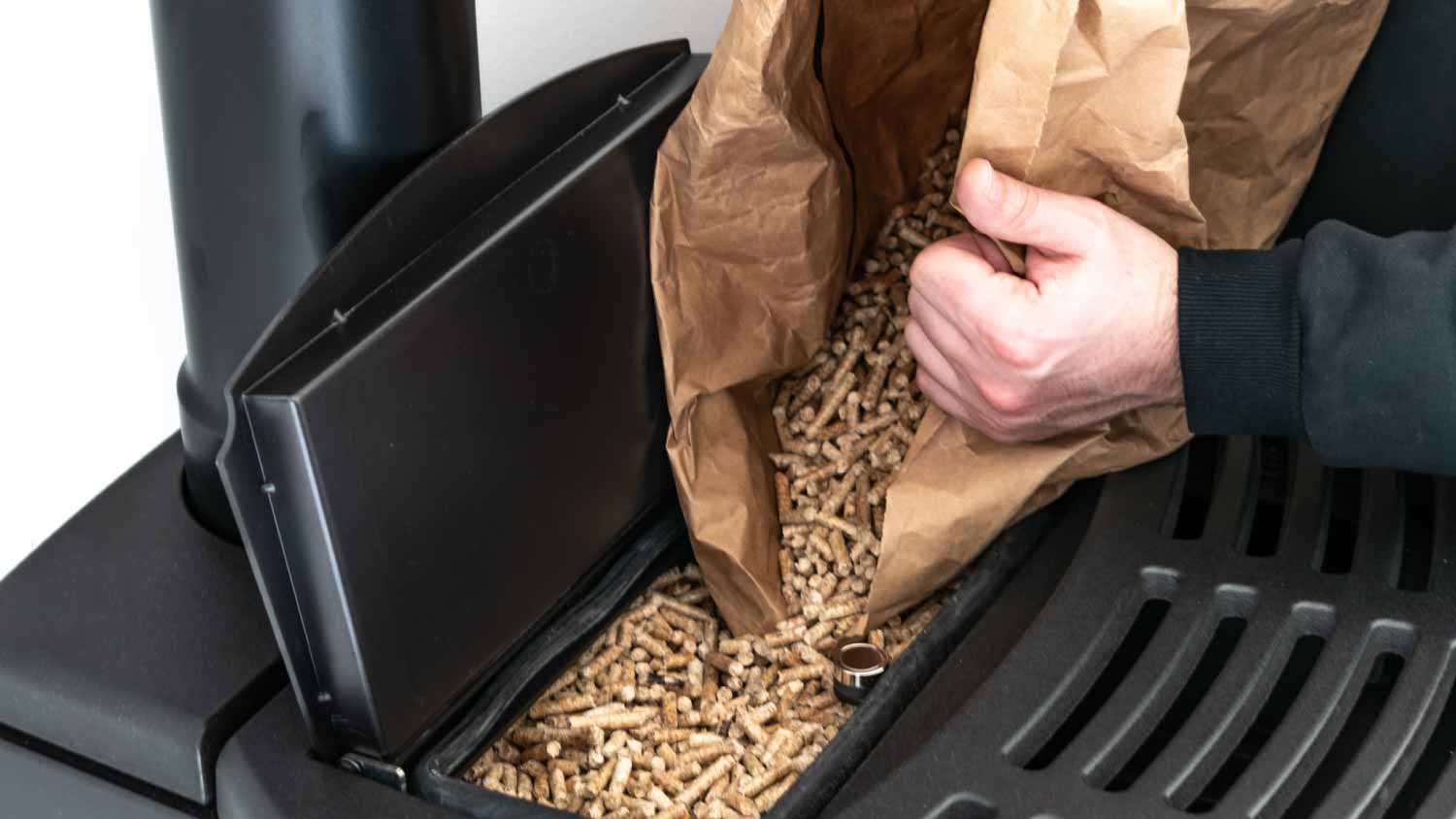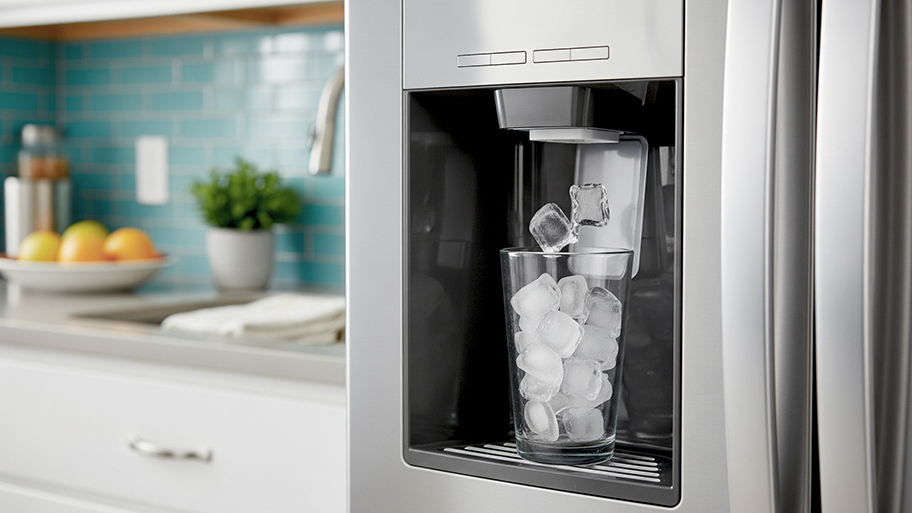
Installing a gas dryer can help you save on your monthly energy bills. Depending on whether you need a new gas line, gas dryer installation costs will vary greatly.
It burns wood yet eats batteries


Pellet stoves need electricity to work, but you can use whole-house generators or battery backups to power them during a power outage.
Battery backup systems specially designed for pellet stoves range from $600 to $2,500.
Portable power stations and solar batteries are excellent ways to power your pellet stove (and entire home) during power outages.
Pellet stoves are a popular alternative to wood-burning stoves because of their sustainability. However, they have an important drawback: Pellet stoves need electricity to run. Even if you have an entire forest’s worth of wood pellets in your stove, the stove won’t operate if the power goes out. Before winter starts, you should have a backup plan for running your pellet stove. Here are your options for ensuring your pellet stove keeps going if you don’t have electricity.
Pellet stoves can make your entire home, or a specific area, toasty. They burn wood and are one of the cleanest and most efficient ways to heat your home through long and harsh winters. Operation is relatively simple: You pour wooden pellets into the stove's hopper and the fire keeps going until the pellets need to be reloaded.
So why do pellet stoves need electricity? Several important elements—like the fan and igniter—need electricity to start up. The igniter is responsible for actually starting, or igniting, the fire. It uses the most electricity of all the electric-powered elements in a pellet stove. The fan helps disperse warm air around your room, which is crucial for larger rooms and more efficient heating.
Pellet stoves can also use electricity to connect to digital thermostat systems to control heat throughout your home. You can even use a thermostat app to check when you need a pellet refill.
When a pellet stove ignites, it uses 400 to 500 watts of power, but the wattage usage decreases throughout the day. During normal operation, pellet stoves use about 100 watts of power. Knowing this wattage can help you determine how to prepare for power emergencies.
Because pellet stoves need electricity to function, a power outage will leave you out in the cold (literally) unless you have a backup power solution. The two main choices are to connect your pellet stove to a backup generator or a backup battery. Backup generators and batteries come in different capacities based on daily power usage and how long you expect power outages to last.
A local pellet stove company can help you determine which option would be best for you.

Whole-house backup generators are designed to keep your entire home up and running as usual if the power goes out. If you live in an area where harsh weather conditions, a shaky power supply, or other circumstances frequently cause extended outages, a whole-house generator can be a sound investment.
Installing a whole-house generator can cost anywhere from $1,500 to $8,700, depending on the size, fuel type, and other factors. Most homeowners pay $5,000 for a backup generator with professional installation. If your area isn't subject to frequent power outages, a whole-house generator may not make sense for your needs and budget.
Nevertheless, a whole-house generator is a solid option for keeping your pellet stove functional alongside everything else in your home.
If a whole-house backup system isn’t an option or doesn’t make sense for your home, pellet stoves can also be backed up with specially designed batteries.
Pellet stove manufacturers and third-party battery manufacturers make battery systems specifically designed for pellet stoves and other indoor appliances. These are often lithium inverters that need occasional recharging, just like the batteries in handheld devices, such as power drills. If you get a battery backup system, you should regularly inspect and recharge it so that you’re always prepared.
Battery backup systems range in cost from $600 to $2,500 depending on the manufacturer and capacity. They can keep your pellet stove humming along and may have some advanced controls that portable power stations and solar batteries do not. They’re also often the most budget-friendly option for backup power, and some models can be used to power other devices, like refrigerators and CPAP machines, in emergencies.
Think of portable power stations as giant versions of power banks you carry around when your phone’s battery is running out. They charge in an electrical outlet just like their pocket-size counterparts, but more advanced models can also be charged with solar power. The cost ranges from $1,000 to $4,500, depending on the capacity.
Portable power stations are a popular alternative to whole-house generators because they’re light and can be used with any device.
Solar power is the most sustainable way to power your home, in general or as a backup. Lithium-ion solar batteries cost $10,000 on average for single batteries or up to $30,000 for whole-house systems.
While they cost significantly more than a whole-house generator, solar batteries don't need fuel to operate, and the cost can be offset with tax credits. Lead-acid solar batteries are less costly at $5,000 to $15,000, although they need more maintenance. A very low-capacity solar battery of up to 3kwH costs $400 to $2,250. If solar is the backup solution for you, get in contact with a local solar power expert to learn more.
From average costs to expert advice, get all the answers you need to get your job done.

Installing a gas dryer can help you save on your monthly energy bills. Depending on whether you need a new gas line, gas dryer installation costs will vary greatly.

Discover the average ice maker repair cost, key price factors, and tips to save. Learn how to budget for your ice maker repair and when to repair or replace.

One of the most common fridge problems is a blown compressor motor. Use this guide to determine the cost of replacing the compressor and to estimate the total cost of your repair.

Now the reasons why your dryer is leaking water and what you can do to prevent further water damage and address the problem.

Washing machine not spinning? Don’t panic—just because it appears to be broken doesn’t mean you can’t get your washer running again. Read on to learn how.

If your fridge is not cold but the freezer is, you can use these troubleshooting tips to find and address the issue, possibly without paying for repairs.